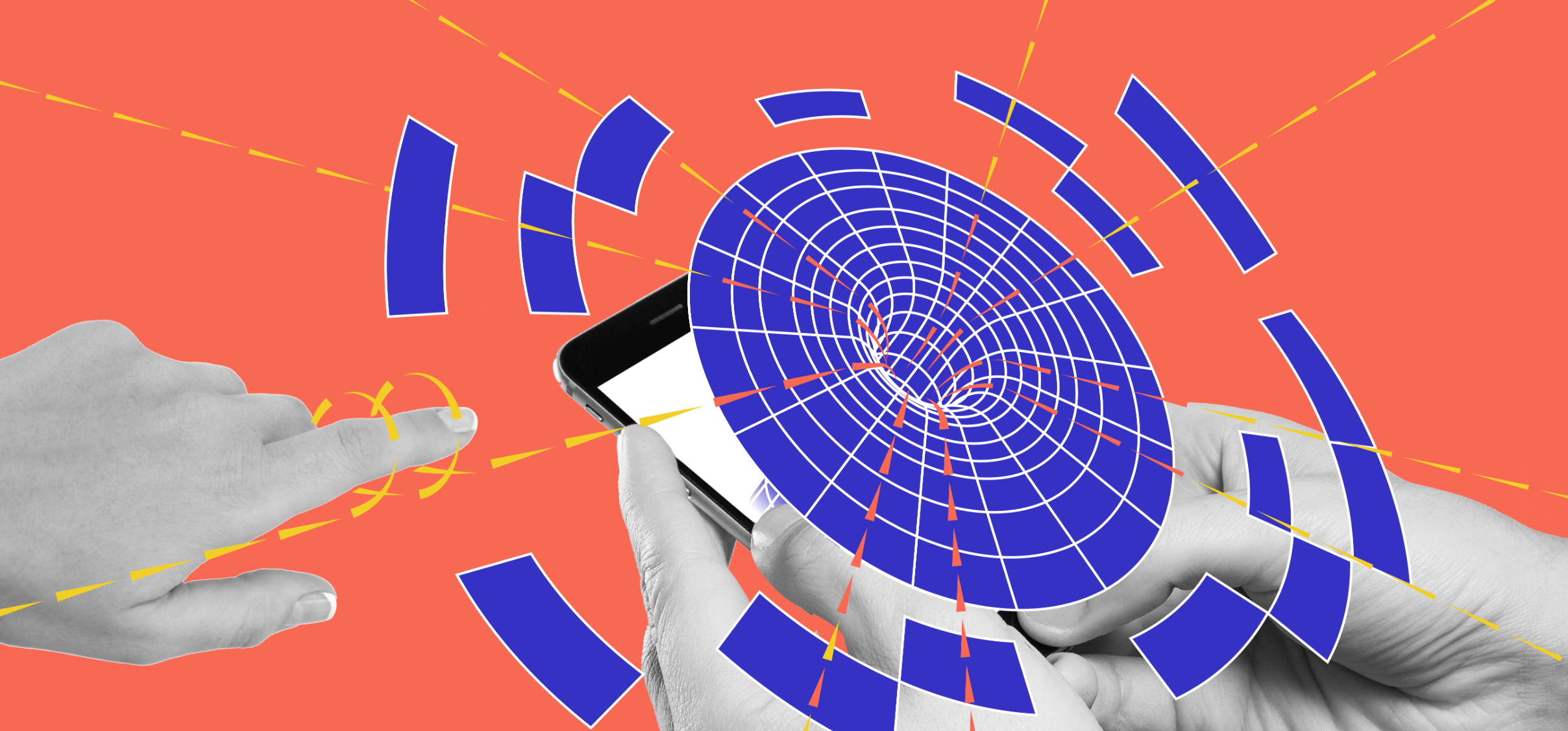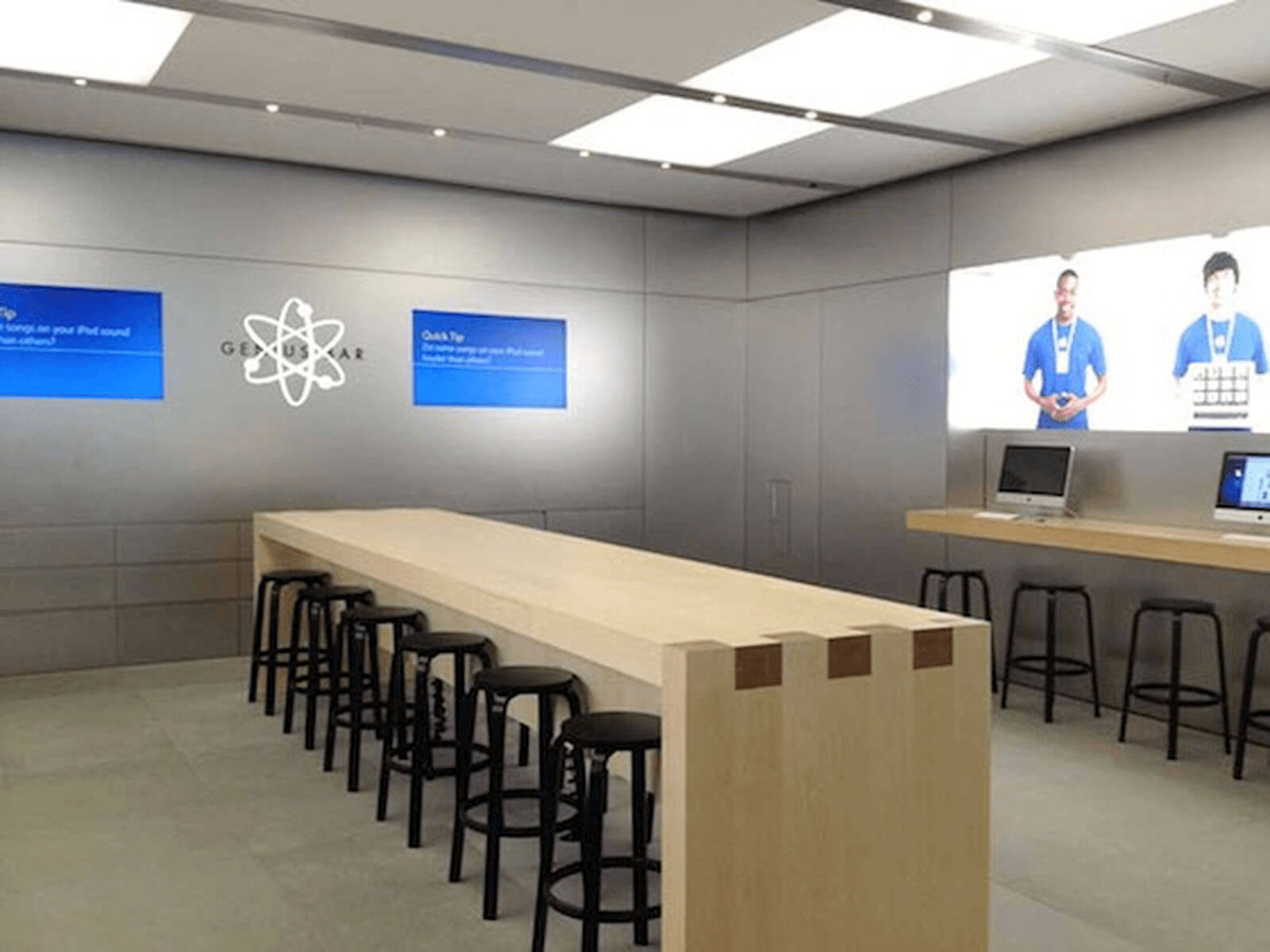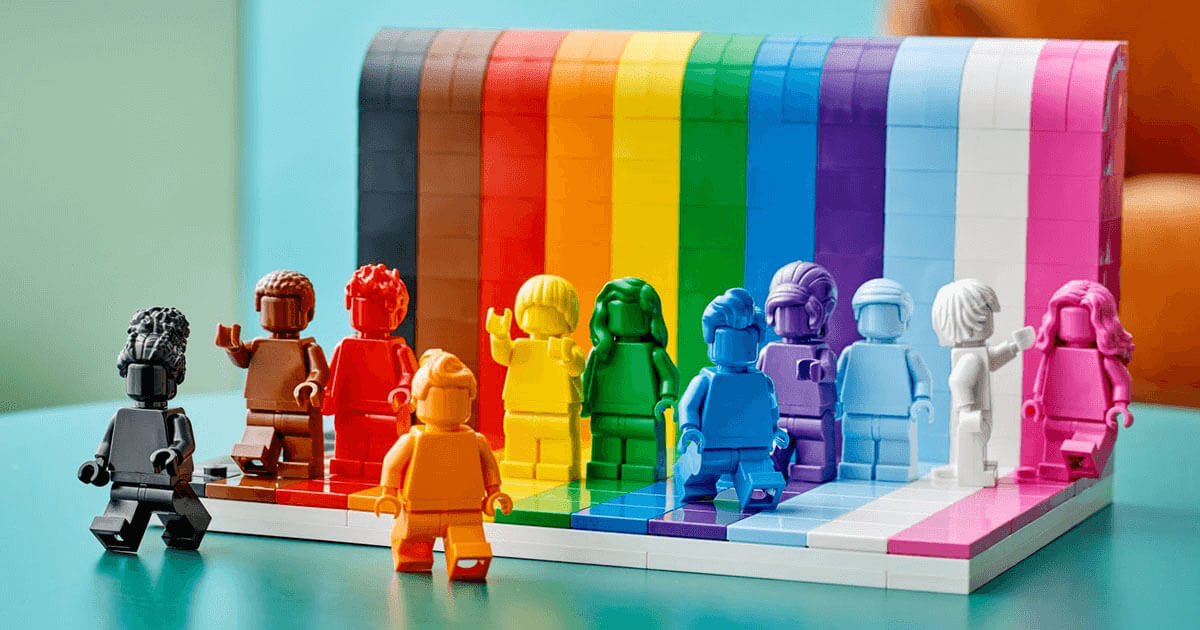Transforming Brand Engagement with Gravitational Pull

The relationship brands have with their consumers is going through a revolution. A new consumer contract is being written and it’s not the brands who are leading the way. It’s their consumers.
Social, cultural and technological trends have changed consumer behaviours and expectations beyond recognition. And the revolution is still ongoing. This is challenging companies in every aspect of their business and brand strategies. They need to be able to respond quickly with innovative approaches to customer experiences and marketing communications.
If your brand and marketing communications still centre around pushing out messages to potential customers, you’re going to be left behind. In today’s marketplace, the ability to engage consumers and pull them into your sphere of influence is vital for any brand that wants to maximise growth.
Those who understand how to create this irresistible force of attraction – or Gravitational Pull – between brand and consumer will succeed in the modern digital-first world. However, while some brands have undeniably got it, many others are struggling. In this article we’ll share some valuable insights, uncovering the nature of Gravitational Pull, its impact on brands and how you can evolve your marketing communications in order to create it.
What is Gravitational Pull?
Gravitational Pull is created when a brand acts, communicates and creates experiences in ways that allow people to more deeply connect with its mission, vision and values.
The theory draws on the concepts of attention, relevance and network effects to create a deep consumer affinity with the brand. Brands with gravitational pull deeply empathise with the reasons why a person has turned to them for a solution, and understand how to create a connection on a deeper, emotional level.
This results in a level of customer loyalty and advocacy with the brand that naturally pulls more and more people into their orbit. With powerful brands we often see consumers not only freely share their love for it with others but also defend the brand when it comes under scrutiny or receives criticism.
Gravitational pull doesn’t just attract people to brands, it helps to retain them as customers. Customers will look to the brands that are most relevant in their lives for new solutions as the need arises. Brands that integrate well into people’s lives are harder to switch away from. This can be a result of compelling ease of use, or it can be the effect of different elements working together. Apple is a familiar example. Their products work well together. Once you have the phone, the laptop is worth considering. Once you have those an Apple Watch looks like a good purchase. And when it comes to replacing your phone? Well, it’s so much nicer when everything works together, isn’t it? Why suffer the inconvenience of switching to a different platform?
This level of engagement may have been difficult to quantify in the past. However the data-driven nature of digital communications means we can start to learn how to track this phenomena in real time and even predict its impact on the bottom line.
The Impact of Gravitational Pull
For Les Binet, one of the godfathers of marketing effectiveness, really smart marketers focus on building ‘memory structures’ that bias consumers’ behaviours into the future. This builds the brand long-term, creating a natural preference for it that can then be converted efficiently into revenues through smart activations.
Binet recently unveiled the results of six years’ worth of research that has started to create some data-driven evidence pointing towards the effectiveness of creating gravitational pull. His work shows a connection between a brand’s share of organic search (arguably a proxy for an aspect of gravitational pull), and future market share.
This reveals that share of online search is a key indicator of brand power, both in the short and long term. Perhaps most interestingly this long-term prediction can also act as an early warning system for brands. An example of this is appliances brand LG. LG’s share of search fell and, in turn, both search volume and then market share followed a downward trajectory.
Binet’s research starts to reveal a key financial correlation between having an effective gravitational pull and market share. However it doesn’t explain how to create the phenomenon.
How to Create Gravitational Pull
So, how can you create the conditions required to enable the deeper level of connection with consumers that will help you to evolve as a brand, stay relevant and navigate in a rapidly changing marketplace? There are three key principles underlying this.
1. Understand That Everything is Brand

The conditions for creating gravitational pull are rooted deep within the organisation and brand’s reason for being. The core of the brand – its mission, vision and values – are what give it weight, creating the ability to draw people into its orbit.
For this to happen, there needs to be absolute clarity in the brand’s DNA. If a brand has an unclear purpose, is relying on smoke and mirrors, or hasn’t truly developed these foundational aspects of its structure, consumers will sense the disconnect and won’t invite themselves in.
There is perhaps no better example of gravitational pull being baked into the DNA than Nike. Nike’s brand mission states that ‘if you have a body, you are an athlete’ and this organising principle runs through all its activations.
While the brand is associated with professional performance, it also bridges the gap to connect with culture. For many people, when you wear Nike you are associating with and saying something much deeper about your own values.
When Nike hired Colin Kaepernick for their 30th anniversary ‘Just Do It’ campaign they upped the ante even further. Using Kaepernick, who took the knee during the national anthem before NFL games to protest police brutality, put what the brand believed in front and centre.
The campaign ran with the strapline “Believe in something. Even if it means sacrificing everything.” Some hated the bold brand position and burned their trainers. However, many more loved it and became even more connected to the brand because of their shared values. The gamble also paid off commercially. Nike’s stock soared over the following year, seeing a five percent increase over the next twelve months.
2. Connect brand strategy seamlessly to all customer interactions
If brand is the interface of your business strategy, it needs to be fully represented in all your customer interactions. Creating a gravitational pull relies on a seamless connection between brand and every interaction, experience and communication.
All too often there are fractures in this process and it takes time to interpret and translate the brand strategy. Marketers can often get very tactical very quickly and do not align closely enough to the brand strategy. They need to consider their long- term marketing strategy to communicate the brand strategy.
Each and every touch point matters and has the power to either build or erode the brand’s ability to create the pull. Take, for example, when the same social media post is shared across multiple channels without thinking about the appropriate activation and voice for that channel. People switch off or even worse think negatively about the brand and its ability to engage effectively with them.

Now look again at Apple. The queues around the block for each new release and the hyped up audiences focused on their every announcement are no happy accident. They are carefully planned and hard earned.
At the heart of Apple’s success is a relentless focus on creating consistency across the brand experience. As a result, they can sell more smartphones and at a higher margin than others in the sector. It’s purely because of the power of the brand.
The emotional connection pulling you into the brand is baked into every touchpoint. When they advertise, the ads focus on showing the consumer the unique value proposition, as opposed to telling them about it. It is also realised through the in-store experience. The Genius bar makes you feel empowered and its radical reshaping of the in-store experience, emphasising Apple’s disruptive spirit. And the brand journey continues when you get home with the premium unpackaging experience.
3. Shorten the distance between you and your customers
The greater the distance a magnet is away from its target, the less its ability to create attraction. So, getting closer to your consumers seems a no brainer. In fact, many brands will say they do this already.
However, relatively few understand how to build fluid organic relationships that pull customers in. Even more challenging is how to activate and empower consumers to be advocates who share the brand mission, vision and values more broadly.
CMOs need to think more empathetically about their consumers. They need to understand their wants, needs, expectations and purchasing motivations in order to create better connections, interactions and experiences with consumers, not for them.
By doing this and increasing the impact consumers can have on the brand, you stimulate powerful advocacy and pull consumers deep into the brand ecosystem.

Take Lego, for example. This remarkable brand has topped the Superbrands ranking of the U.K.’s strongest consumer brands for the last two years. In such a fickle fast moving industry this is an enormous feat.
Their success is, in part, due to an organisational culture of customer-centricity. Their deep understanding of their consumers’ motivations means the brand does not frame itself as a toy company. Instead their business is built around the concept of ‘free play’, opening up the opportunity to create interactions across a broader range of contexts, from gaming to theme parks and film franchises.
The brand has adapted to the social age brilliantly, creating engaging content across all platforms. As one of the most digitally engaged brands in the world, it is the second most watched brand channel on YouTube with a large proportion of the content created by participants.
User-generated content extends their reach. The ‘Beyond the Brick’ fan YouTube channel, for example, was created by two teenagers and features the incredible Lego creations of builders from across the globe. The channel has grown to worldwide phenomena with over 530,000 subscribers and over 200 million views.
Another source of Lego’s enormous gravitational pull comes from its Lego Ideas platform where users can submit, comment and vote on ideas for Lego products. By shortening the distance between the brand and their most valuable consumers, Lego not only created a continuous dialogue but gained a valuable source of amazing consumer insight.
It is Lego’s ability to connect with its customers in diverse and meaningful ways that contributes to creating such ardent brand advocates. Lego’s customers are keen to join up, contribute and become fully enmeshed in the brand.
Evolving Your Strategic Approach
How can brands begin to build gravitational pull? All brands exist somewhere along a spectrum when it comes to how they engage with their customers and their understanding of creating gravitational pull. Their communication models range from the simple outbound communications of traditional push marketing, and ladder up to the multichannel, participative brand communities of platform business models and interaction fields.
It’s easy to admire the skill and dexterity of brands like Lego, but if you’re a CMO tasked with emulating their success it can feel overwhelming. However, there are ways to progress, gaining sophistication along your evolutionary journey, at a sustainable pace. To understand this, let’s look at each of the communication models in turn. Placing your own organisation’s evolution along this spectrum can show you how far you have come, and provide pointers for the next steps to take.
1. Outbound Communications

Outbound communicators are engaged in traditional push marketing strategies. These companies commonly have a one-way communication model and haven’t framed their offering in a social way. They share product or service messages with customers, but offer limited opportunities for consumers to interact.
This is probably a model of communications that most brands believe they need to move away from, since it is often characterized as a simple and out-dated broadcast model. Whilst this approach can no longer be the long-term option for any modern brand, there is still a role for direct outbound communications, and a sensible evolution for a legacy business attempting to modernise how its brand engages with people is to stop broadcasting and start personalising outbound communications using what you already know about your customers to build a better relationship. In this way you build a strong foundation for more relevant approaches.
To build up the brand and evolve the consumer relationship, it may be time to start thinking about a back and forth communication system for customers.
2. Two Way Dialogue

Adding a layer of interaction with customers allows for two way dialogue. Two-way communication allows a company to start better understanding how their product or service solves a problem for their customer.
A company needs to have some way to allow customers to speak back to enter two- way communication. This could involve cultivating a presence on social media to open up conversations with customers and providing mechanisms for customer feedback.
There are two key challenges with implementing two-way dialogue well. The first is operational – you need to have the scale of organisation and operation to be able to field customer requests and solve issues for them. Your social media managers will need to have the skills and resources of customer support agents. The second is to do with delivering brand experience – the quality and tone of your interactions has to reinforce your brand.
3. Encouraging Sharing

When a brand understands how and where customer interactions are happening they can actively support the sharing of information and ideas and become a facilitator within their category.
In this mode of communication, the brand understands its role in the lives of its top consumers in order to add value to this core group. While this community and interaction are not owned by the brand, their participation is valued in a way that allows the brand to get closer to its customers.
At this stage, it is beneficial for a brand to start thinking about social influence and creating the motivation for consumers to become brand advocates. This allows the brand to evolve once again in order to extend their reach in the ecosystem.
Organisations who wish to operate at this level can move things along by actively providing opportunities and spaces for people to share. That can be by encouraging creative use of products and services and inviting people to showcase their own results, and by ensuring that sharing buttons, hashtags, events and channels are in place and well publicized so that people can be confident that they will find the right audience. Actively engaging with professional influencers can play an important role in this kind of communications strategy.
4. Audience Voice

Customers like to share their experiences. In order to benefit from these interactions, brands must understand where they are happening and actively participate.
By supporting and encouraging customers to continue to connect and communicate, brands can start to build social currency at this level. Creating platforms for consumers to share their ideas, both with the brand and with like- minded individuals, creates loyalty and advocacy that starts to draw in more and more people. The Lego case study we mentioned earlier is a great example of how passionate consumer brand advocates can become part of the product development lifecycle.
To get to this stage, your brand needs a strong marketing communication strategy. The focus must be on the ability to share not only within the brand’s nucleus but also externally, thereby creating a community. Having too narrow an information-sharing system at this stage will slow velocity and make it difficult to create that pull.
Your brand must have clear framing, branding and definition to continue to hear and be the audience’s voice. After these factors have been solidified and are owned by the entire organization your brand can start moving into the interaction field.
5. Participant in Brand Community

The world is created through interactions. By connecting people, information and data we can create higher quality and more consistent interactions that build brand value past a simple product or service.
In this final stage, your brand is creating an interaction field pulling in the nucleus, ecosystem and even other brands to assist in interactions and information sharing. Having other brands in the interaction field will help improve the ecosystem size and create velocity.
Your brand needs to be at the core of, and a direct participant in (if not the owner of), the interaction field. A direct line of communication between the brand and the interaction field must exist where active and consistent participation encourages sharing, both internally and externally.
Conclusion
In a challenging marketplace where everything is in flux, the need to connect with your consumers remains constant. However, as we’ve seen, how we connect and the relationships we create needs to evolve.
The concept of gravitational pull gives us a way to design an overarching marketing strategy that creates deeper, more profitable connections with our customers.
As American astronomer Andrea M Ghez puts it: “Gravity wins over all other known forces.”
In order to succeed, organisations must make sure gravitational pull originates deep within the brand and is connected to all interactions. They also need to shorten the distance between the brand and its customers.
This is what Vivaldi does and we’d love to have a conversation with you about it. Contact us.